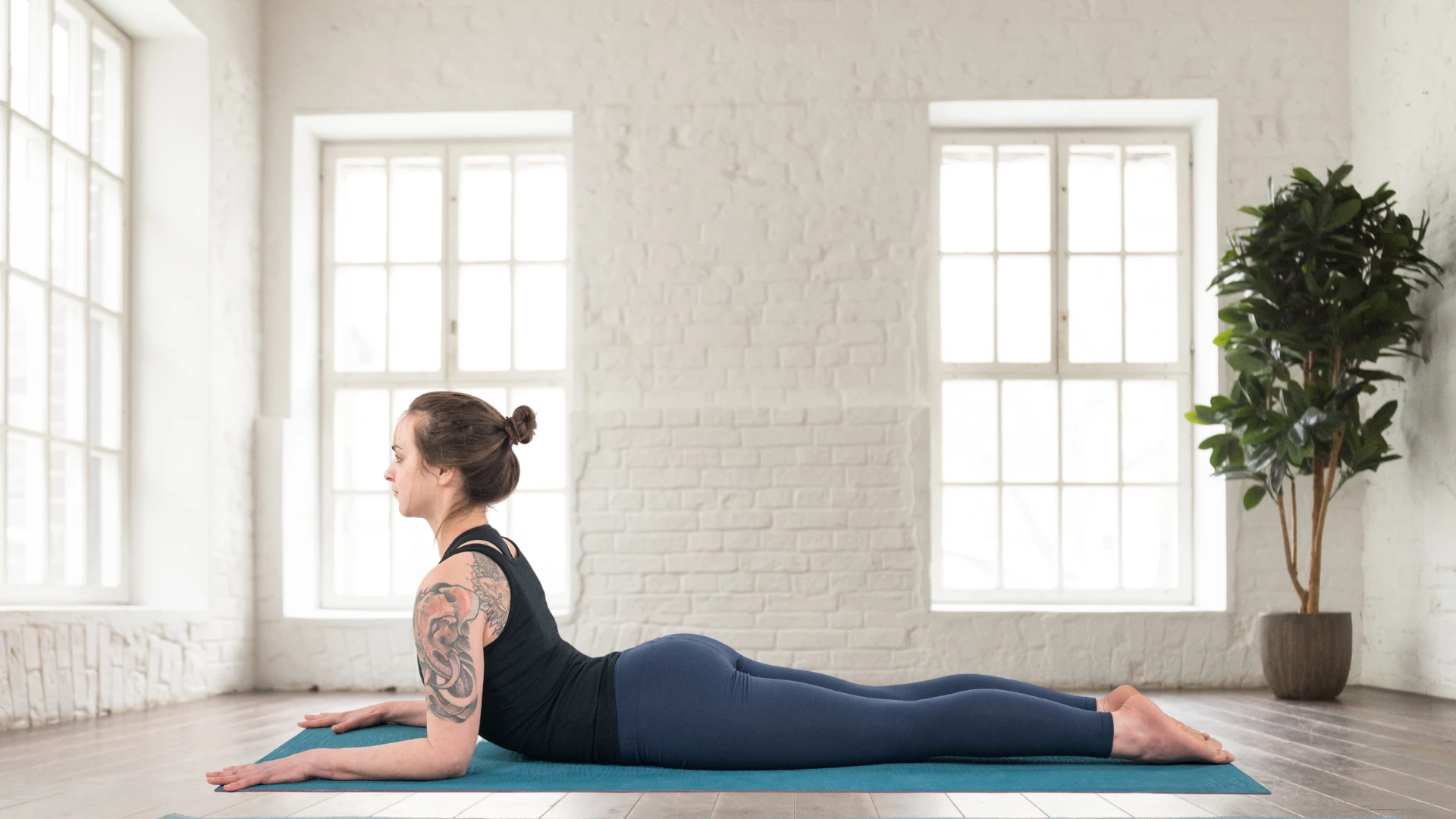Nurture Your SI Joint in Yoga Practice

Article At A Glance
SI (sacroiliac) joint dysfunction is incredibly common and can feel debilitating. What steps should you take to reduce pain and prevent further injury? Learn how to protect your lower back in yoga practice and in daily life here.
In a recent article, we explored how hormonal fluctuations, pregnancy, and postpartum challenges, recurring asymmetrical activity, and sports injuries can lead to sacroiliac joint (SI joint) dysfunction and manifest as lower back pain. Once your SI joints are destabilized, it becomes much easier to irritate them, which means that you would need to take extra care of your lower back and sacrum to keep them happy and pain-free.
How to Deal with Present and Future SI Joint Issues

Here are some steps you can take to deal with your current discomfort and prevent future occurrences:
- Identify the problem. SI joint dysfunction usually manifests as localized discomfort on one side of the lower spine that gets aggravated by prolonged sitting, standing, or bending forward. You might feel like one leg is longer than the other or have a general feeling of instability or unevenness around your sacrum.
- Reduce or eliminate activities that contribute to the discomfort. Be mindful of how you move and position your body during your day. Don’t sit in twisted or lopsided positions, don’t carry heavy loads on one side, and try to reduce all asymmetrical activities until you feel more stable.
- Avoid strong yoga classes and other similar activities when your sacrum feels vulnerable. Not all yoga teachers are aware of the potential risks that some yoga poses have for the stability of the sacrum. It might be up to you to protect your sacrum in a yoga class and in your own home yoga practice.
Minimize the Risk of Injury in Your SI Joint

Here are some basic suggestions that can help minimize the risk for your sacrum:
- Limit the number of movements you do on one side before switching to the other side.
- Stabilize the sacrum in every practice, especially if it’s heavy with asymmetrical movements.
- Be very careful with twisting postures. Use proper preparation, limit arm leveraging, and do not lock your pelvis in place while twisting.
- Be sure to prepare your body adequately for more challenging asymmetrical poses and use proper compensation.
- Stay very aware of how each movement feels in your lower back/sacrum area.
2 Steps to Take in Every Yoga Practice
When you are ready to work with the lower back and sacrum area in your yoga practice, there are two main steps you need to take:
Step 1: Release tension in muscles that link to the sacrum.
When your SI joint becomes irritated, the muscles around the sacrum usually tighten to protect it and limit movement. This can cause discomfort on its own and can also restrict the gliding motion between joint surfaces, further irritating the joint. You end up being stuck in the vicious cycle of joint irritation/muscular guarding. To get out of that cycle, we usually use the contract-relax-gentle stretch principle to release contraction of the muscles that assist in SI joint stabilization: piriformis, erector spinae, hamstrings, and gluteus maximus (and its relationship with hip flexors).
Step 2. Build stability by strengthening the surrounding structures.
Since you cannot effectively strengthen your ligaments, you will need to develop healthy tone and symmetry in muscles that support your sacrum and assist with SI joint stabilization (the same muscles listed above). Isometric movements work great because they encourage you to engage the surrounding structures in more neutral anatomical positions without additional stress on your sacroiliac ligaments.
Also, read...
4 Yoga Poses for Better Posture
12 Causes of Chronic Inflammation
Related courses
Bodymind Ballwork: Myofascial Release for Lifelong Flexibility
Keys to Finding Inner Strength: A Yogic Wisdom Path to Developing Greater Resilience
Somatic Yoga for Fascial Unwinding

Educated as a school teacher, Olga Kabel has been teaching yoga for over 14 years. She completed multiple Yoga Teacher Training Programs but discovered the strongest connection to the Krishnamacharya/ T.K.V. Desikachar lineage. She had studied with Gary Kraftsow and American Viniyoga Institute (2004-2006) and received her Viniyoga Teacher diploma in July 2006, becoming an AVI-certified Yoga Therapist in April 2011. Olga is a founder and managing director of Sequence Wiz— a web-based yoga sequence builder that assists yoga teachers and yoga therapists in creating and organizing yoga practices. It also features simple, informational articles on how to sequence yoga practices for maximum effectiveness. Olga strongly believes in the healing power of this ancient discipline on every level: physical, psychological, and spiritual. She strives to make yoga practices accessible to students of any age, physical ability, and medical history, specializing in helping her students relieve muscle aches and pains, manage stress and anxiety, and develop mental focus.


